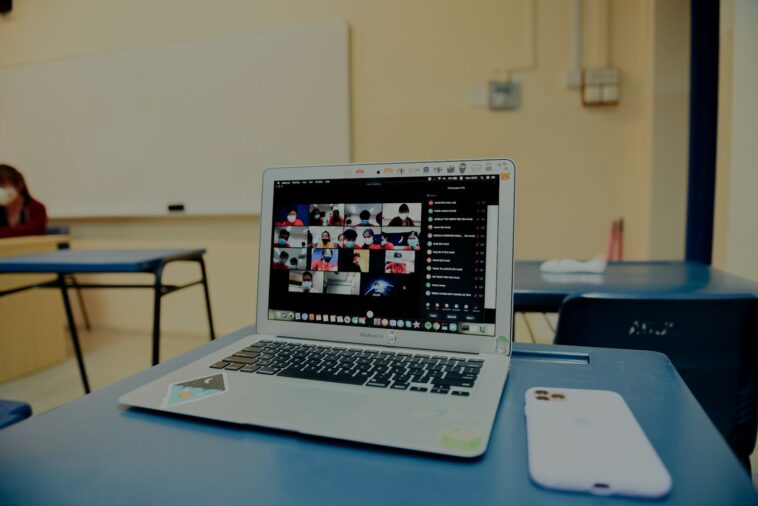Webinars have become one of the most powerful ways to connect with people, whether you’re teaching, selling, or simply sharing your expertise.
They allow you to reach a global audience without leaving your desk, and when done right, they can build trust, spark conversations, and even lead to new opportunities.
But here’s the challenge: many webinars fall flat. The content might be solid, but the audience tunes out halfway through, distracted by emails or scrolling on their phones.
Hosting a webinar that not only attracts viewers but keeps them engaged from start to finish takes more than slides and a microphone.
I’ve learned that a successful webinar feels less like a lecture and more like a conversation. The good news?
You don’t need to be a professional broadcaster to make it happen—you just need a plan, the right tools, and a genuine interest in connecting with your audience.
Let’s walk through how to make your next webinar engaging, memorable, and effective.
Step 1: Start with a Clear Purpose
Before you open Zoom or create a registration page, ask yourself: Why am I hosting this webinar?
Are you educating potential clients? Launching a product? Building thought leadership? Your purpose will guide everything—from the title of your webinar to the way you present your slides.
A focused purpose also makes it easier to communicate value to your audience.
Instead of saying “I’m hosting a webinar on digital marketing,” you might say, “I’m hosting a webinar that will show small business owners how to attract new customers online without paying for ads.” See the difference? One is vague; the other makes a clear promise.
Step 2: Know Your Audience
You can’t engage people if you don’t know who they are. Take time to understand:
What challenges are they facing?
What goals do they want to achieve?
What questions are they already asking?
Once you know this, you can shape your webinar content to address those specific needs. For example, if your audience is beginner-level, keep your explanations simple and avoid industry jargon. If they’re advanced, skip the basics and go deeper into strategies.
Step 3: Craft a Compelling Title and Registration Page
Think of your title as a headline. It should grab attention and promise something valuable. Instead of “How to Use LinkedIn,” try “How to Turn LinkedIn Connections into Paying Clients.”
Your registration page should reinforce that promise. Highlight what attendees will learn or gain from showing up.
Keep the form short—name and email are usually enough. The easier it is to register, the more people will sign up.
Step 4: Plan for Interaction, Not Just Presentation
This is the part many hosts overlook. A webinar isn’t just about delivering information—it’s about creating an experience. To keep your audience engaged:
Use polls or surveys. These give people a chance to participate while giving you instant insights.
Encourage chat. Let attendees share thoughts and questions as you go. A lively chat box makes the session feel more social.
Ask questions. Pause during your presentation and invite responses. Even rhetorical questions keep people mentally engaged.
Use breakout rooms (if your platform supports them). For longer webinars, small group discussions can be powerful.
The key is variety. If you talk non-stop for an hour, people will drift. But if you mix in moments of interaction, they’ll stay with you.
Step 5: Keep It Visually Engaging
Slides are helpful, but they should support your message, not drown it. Some tips:
Use fewer words and more visuals. Think images, icons, or short bullet points.
Stick to a clean, consistent design. Avoid cluttered slides.
Share real examples or case studies to make abstract points more relatable.
Consider using a webcam—seeing your face builds connection.
Remember: people don’t just want to hear your message, they want to see it in action.
Step 6: Practice Your Delivery
You don’t need to memorize a script, but practicing helps you sound natural and confident. Run through your presentation a few times, test your tech (microphone, camera, slides), and check your internet connection.
Also, plan for pacing. Most people can focus for about 8–10 minutes at a time before their minds start to wander.
That means you should break your session into sections, with interactive elements sprinkled throughout.
Step 7: Don’t Forget Follow-Up
A successful webinar doesn’t end when you click “End Meeting.” Follow-up is where the real value happens. Send a thank-you email with:
A recording of the session (for those who missed it or want to rewatch).
Additional resources, like slides or a checklist.
A clear next step—whether that’s booking a consultation, joining your newsletter, or signing up for your course.
Following up not only shows professionalism but also helps you continue the relationship with attendees.
FAQs
Do I need fancy equipment to host a good webinar?
Not at all. A decent webcam, a good microphone, and stable internet are usually enough. If you want to upgrade, invest in better audio first—people will forgive lower-quality video, but poor sound makes them tune out quickly.
How long should my webinar be?
Aim for 45–60 minutes. That’s long enough to provide value without overwhelming people. If you expect longer discussions, build in breaks or Q&A sections.
What’s the best time to host a webinar?
It depends on your audience. For professionals, late mornings or early afternoons (in their time zone) often work best. For a global audience, consider offering multiple sessions or recording it for on-demand viewing.
How do I handle low attendance?
It happens to everyone. Instead of seeing it as a failure, use it as practice. Record the session and share it afterward—you’ll still reach people even if they couldn’t attend live. Over time, as you refine your promotion and build an audience, attendance will grow.
Wrapping It Up
A successful webinar doesn’t come from perfect slides or flawless delivery—it comes from making your audience feel seen, heard, and valued.
When you approach it as a genuine conversation rather than a broadcast, people will not only stay engaged but also look forward to hearing from you again.
So here’s my question for you: If you were to host a webinar tomorrow, what’s the one idea or insight you’d be most excited to share?





GIPHY App Key not set. Please check settings